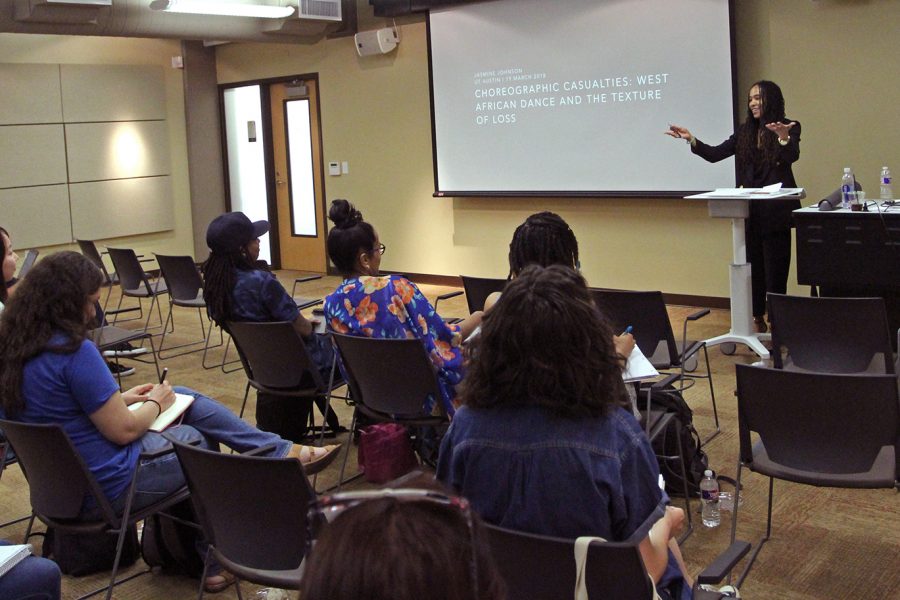Jasmine Johnson, African diaspora studies scholar, said cultural appropriation is widespread in the modern practice of West African dance.
Johnson is an assistant professor of theater arts and performance studies at Brown University and examines the politics of black movement including dance, diasporic travel and gentrification. She spoke to an audience of about 30 students and community members on Monday at the Gordon White Building on campus.
“The rhetoric of racial indifference dominates,” Johnson said. “It has made more space for non-black participants and sharpened black Americans’ feelings of marginalization.”
Johnson said since West African dance became popularized in America in the 1960s, it has morphed from a cultural tradition into a commodity.
“Today, dance classes are unmistakably characterized by the predominance of white women,” Johnson said. She said the result of the whitening of these dance spaces is “an over-emphasis on feeling good” and a de-emphasizing of the reality of racial inequality.
“Actually this is a really charged space,” Johnson said. “Because everyone is negotiating their relationship to blackness and anti-blackness.”
Johnson cited white participants, who often report feeling a homely connection to Africa, make the problem worse with this assumed identity.
“Dance workshops are often marketed as homecoming trips, despite their predominantly white composition,” Johnson said.
Johnson said while black women use dance to evoke a sense of returning to ancestral homes, white dancers often construct an artificial connection to Africa that ignores racial context.
“African art spaces become defined as more ‘utopic’ the fewer black, female identifying bodies are present,” Johnson said.
Johnson is a renowned dancer and incorporated a short performance into her lecture.
“She does a really masterful job of walking through the methodology, and then she displays what she’s actually discussing,” said Minkah Makalani, associate professor of African and African diaspora studies and organizer of Monday’s lecture.
Joshua Ellis, an African and African diaspora studies and government senior, said he was glad the University had been able to showcase Johnson’s research.
“She seemed so passionate,” Ellis said. “It really spoke to me.”
Johnson said the culmination of appropriation of West African dance is a “watering down” of the traditions that make it unique.
“The changing of the rhythm, to me, is constituted by loss,” Johnson said. “It is a texture of loss rather than evidence of sameness.”





















